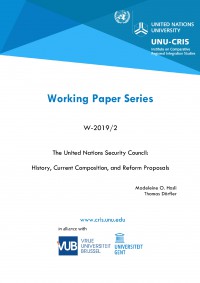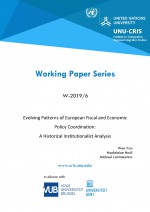The United Nations Security Council: History, Current Composition, and Reform Proposals

The paper explores how the Security Council has reacted to the changing global order in terms of institutional reform and its working methods. First, we look at how the Security Council’s setup looks increasingly anachronistic against the tremendous shifts in global power. Yet, established and rising powers are not disengaging. In contrast, they are turning to the Council to address growing challenges posed by the changing nature of armed conflict, the surge of terrorism and foreign fighters, nuclear proliferation and persistent intra-state conflicts. Then, we explore institutional and political hurdles for Council reform. While various reform models have been suggested, none of them gained the necessary global support. Instead, we demonstrate how the Council has increased the representation of emerging powers in informal ways. Potential candidates for permanent seats and their regional counterparts are committed as elected members, peacekeeping contributors or within the Peacebuilding Commission. Finally, we analyze how innovatively the Council has reacted to global security challenges. This includes working methods reform, expansion of sanctions regimes and involvement of non-state actors. We conclude that even though the Council’s membership has not yet been altered, it has reacted to the changing global order in ways previously unaccounted for.



